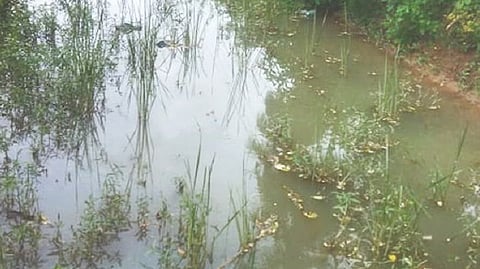

The Ministry of Jal Shakti recently released an expansive report detailing India’s first waterbodies census. The study was aimed at developing a national database for all waterbodies — recording the status of ponds, tanks, lakes, and reservoirs. It’s a timely exercise as we are lurching towards the peak of summer, a time when questions regarding water scarcity, sufficiency and security begin occupying centrestage. The data gathered pertains to the size of these waterbodies, their condition, status of encroachments, usage, storage capacity, status of filling up of storage etc. Waterbodies were defined as all natural or man-made units bounded on all sides with some or no masonry work used for storing water for irrigation or other purposes (industrial, domestic/groundwater recharge etc).
Conducted in 2018-19, the census enumerated over 24 lakh waterbodies across all states and Union Territories. Several data points emerged from this — one of them being that 1.6% (38,496) waterbodies out of all the enumerated waterbodies were reported to be encroached upon. Of this, 95.4% were located in rural areas whereas the remaining 4.6% were in urban areas.
West Bengal has the highest number of ponds and reservoirs, whereas Maharashtra leads in water conservation schemes, while Tamil Nadu has the highest number of lakes. Notwithstanding TN’s natural bounty of 1.07 lakh waterbodies, about 8,300 have been encroached upon. Of the total waterbodies, 50,197 are not in use, owing to them being dried up, not being desilted, being damaged beyond repair, and due to the high saline content. The census holds significance for citizens, town planners, administrators, policy makers and government officials on the State and Central level. Despite India accounting for almost a fifth of the world’s population (18%), we hold just about 4% of the world’s share of fresh water resources. About 80% of the water available in the country is deployed towards agricultural use while 20% goes to domestic and industrial use. Close to 70% of surface water of the country is deemed to be unfit for human consumption as potable water.
Data provided by the Central Water Commission (CWC) was the basis for the government’s apprehensions regarding the per capita availability of water in India. It said this numeric is projected to fall from 1,486 cubic metres in 2021 to 1,367 cubic metres by 2031. It is worth recalling that the 1951 census said that the per capita availability in India exceeded 5,000 cubic metres.
Chennai has already borne the brunt of rampant encroachments, as witnessed in the debilitating floods of 2015. Its vanishing and shrinking lakes hold numerous lessons for cities all over. Thankfully, the government has taken cognisance of such issues, and initiated programmes like the Repair, Renovation & Restoration (RRR) scheme, part of the PM Krishi Sinchayee Yojana. It’s a project that helps states gather Central assistance for creating and restoring irrigation centric waterbodies. Its objectives include ground water recharging, increasing tank storage capacity, making available a larger quantity of drinking water, and improving agriculture, among others.
The Jal Shakti Abhiyan, which features rainwater harvesting as one of its tenets, along with increased afforestation, scientific means of water conservation is also a worthy addition to the initiatives undertaken by the Centre to increase India’s water sufficiency. But, an enormous amount of political will is needed to bring such projects to fruition. The lure of development ignoring the core requirements of water preservation risks turning our most valuable reservoirs into cement holes.
Visit news.dtnext.in to explore our interactive epaper!
Download the DT Next app for more exciting features!
Click here for iOS
Click here for Android